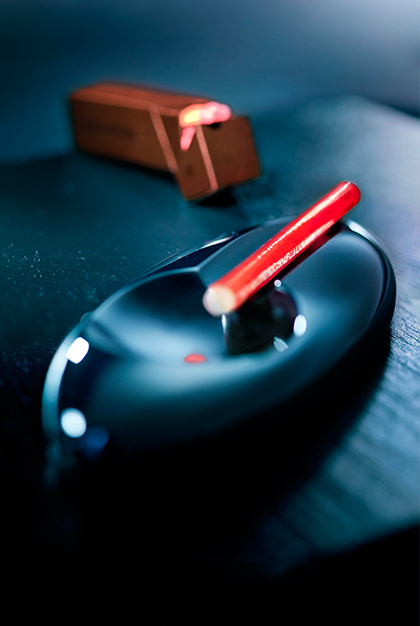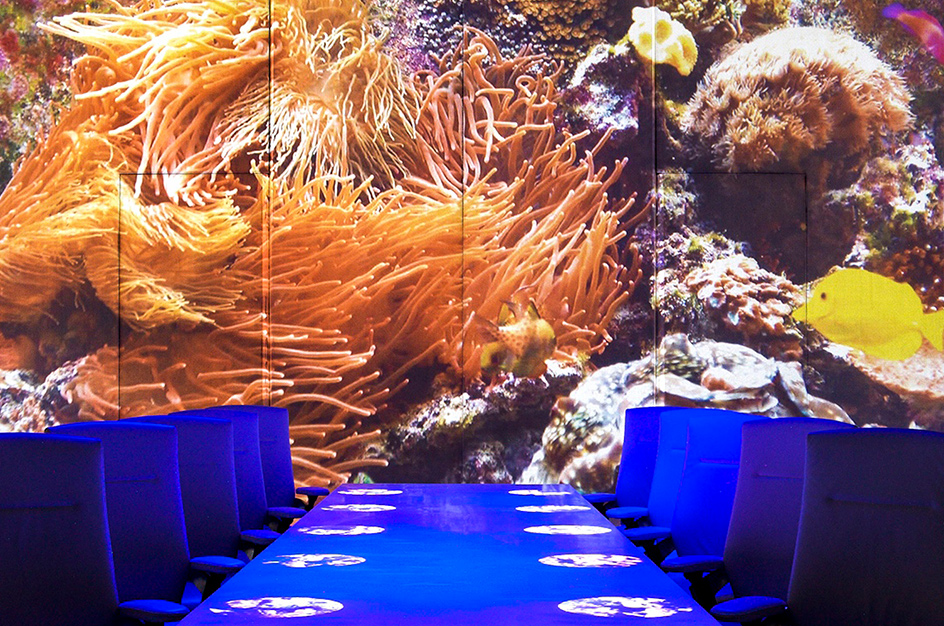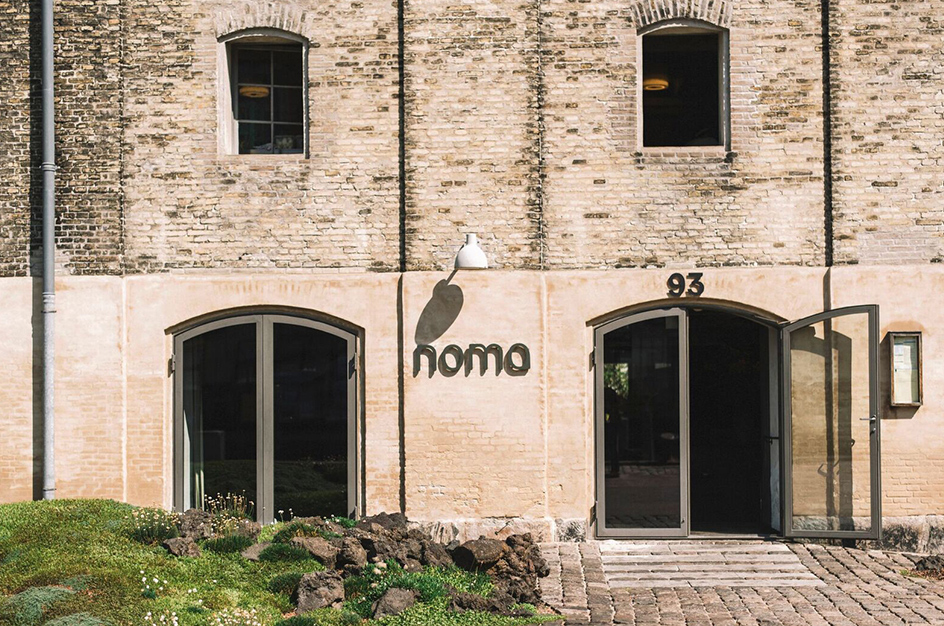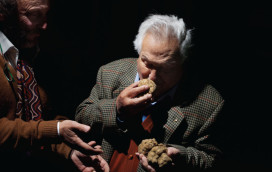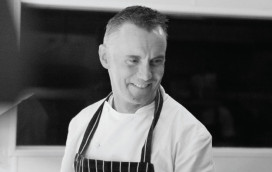The luxury minibus pulls up outside a scruffy door in a back alley somewhere in the vast metropolis that is Shanghai. Ten expensively dressed, if somewhat confused, figures step out and survey their insalubrious surroundings.
In terms of age and ethnicity, they are an eclectic bunch that includes American business executives, newly wealthy Chinese entrepreneurs and cultured young Europeans. But they have one thing in common: each has paid a small fortune, and many have traveled here especially for this one evening, to embark on a multi-sensory gastronomic journey. Welcome to the new frontier of food tourism.
These experience-hungry global travelers have bagged a coveted seat at Ultraviolet, a restaurant in a mystery Shanghai location that has achieved cult international status over the course of its three-year existence. A black door slides open to reveal a large pod-like capsule which serves as the dining space. Each guest’s name is projected onto their spot-lit place at the single communal table before the 20-plus course tasting menu is presented.
Crucially, every plate is coupled with music or sound effects (such as rain lashing on a roof); films and graphics are projected onto all four surrounding walls; bespoke lighting is directed onto the dishes themselves; presentation and service are frequently dramatic in the extreme.
The whole thing is witty and theatrical and, most of all, great fun. Ultraviolet’s diners find it difficult not to smile and laugh throughout much of the globe-trotting four-hour extravaganza, created by French chef Paul Pairet. A dish called “Foie Gras Can’t Quit”, for example, is a crisp fruit-skin “cigarette” filled with an airy and delicious foie gras mousse sitting in an ashtray dotted with black cabbage “ash”.
We’ve long been led around the world by our stomachs, of course. The idea that food and wine might play a role in determining our next travel destination is far from new; indeed, France’s tourism industry has been built on it. It’s the new extremes that we will go to, and the real sense of discovery that so many seek, that makes this such a notable phenomenon.
A new generation of foodies is harnessing the power of social media – after all, Instagram’d pictures can induce travel and food envy simultaneously – and racing to notch up far-flung culinary experiences before anyone they know gets there first. It’s an extension of the metropolitan social cachet of eating in a new restaurant within days of its launch, taken to the global level. “Our customers usually secure their reservations here before booking flights and accommodation,” confirms Monica Luo of Ultraviolet. “We recently had five gentlemen come from France as a surprise birthday gift for one of them. They were in Shanghai for only 48 hours, but they certainly had a blast.”
Others of a similarly inquisitive nature will seek out the world’s very finest sushi, served at Tokyo’s ultimate specialist restaurants such as Sukiyabashi Jiro or Sushi Saito. Each will seat only 8 to 12 diners at a simple wooden counter, with the venerated sushi master hand-preparing each piece of fish in front of them. Securing a seat (for non-Japanese at least) will involve working your charms on the concierge. Diners are often in and out in just an hour or so, but they are still prepared to go to such lengths for the ultimate nigiri.
Litti Kewacha is a Thai entrepreneur who regularly criss-crosses the globe in search of outstanding meals. “People travel for sightseeing, some for art, concerts, sporting events. I travel for food. My trips around the world are driven by a desire to explore the world of gastronomy, and to appreciate and enjoy not just the best food but the greatest minds in gastronomy,” he says. “For me, a meal at Noma [in Copenhagen, Denmark] or El Celler de Can Roca [in Girona, Spain] is like going to an exhibition of masterpieces by one of the world’s leading artists.”
This is not a trend, however, that is restricted to a super-wealthy high-culture elite. Young creative professionals are replacing the adventurous backpacking of their youth with intrepid and immersive food experiences in destinations as diverse as Bangkok and Bogotá, Mexico City and Osaka. Increasingly, travel companies are getting savvy to this – often supported by national tourism boards – and arranging itineraries revolving around food. Already over one-third of western travelers’ spend is devoted to eating and drinking, a figure that’s growing steadily – and any nation’s overall appeal is massively enhanced if it’s seen to be an epicurean hotspot.
American-born Mason Florence has lived in Bangkok since 2002, and has documented the changing food scene. While the city “oozes food, and the culture of Thai people is deeply rooted in the art of cooking, with locals frequenting late-night street food meccas like Yaowarat and Banglamphu”, these days more adventurous food-hunters are finding their way to lesser-known hot spots: “places like Wang Lang Market and Talat Phlu, both a short ride across the river from central Bangkok”.
In recent years the Thai capital has added higher-quality restaurants to its roster. “Bangkok has developed an international reputation for its restaurants, in large part due to their success in the Asia’s 50 Best Restaurants list,” says Florence. “More than ever we’re seeing hardcore foodies flying into town with one sole purpose: to eat. Many of them journey from other parts of Asia, while others come from as far afield as Europe, Australia and the Americas.”
As well as restaurants such as Nahm, where Australian-born David Thompson uses his deep knowledge and extensive research of historic Thai recipes to produce super-authentic dishes, the city has produced a new raft of cool, informal bar-restaurants such as Namsaah Bottling Trust, Quince and Opposite Mess Hall, as well as Eat Me, run by New York chef Tim Butler, where the city’s glammed-up crowd sample edgy cocktails alongside razor clams with spicy nduja pork.
On the other side of the world, Mexico is rapidly becoming another promised land for fashionable-food devotees. Each of the country’s regions has its own distinct identity and signature dishes, from the Baja peninsula on the west coast to Oaxaca in the south. Mexico City itself boasts enough great restaurants, bars and markets to sate the hungriest and most demanding traveler’s appetite – literal and metaphorical.
The menu here is certainly about much more than tacos and tortillas – think fried insects at Rosetta or the 400-day aged “mole madre” at Pujol, two of the Mexican capital’s most acclaimed eateries. At the same time, it’s also about an extraordinary array of tacos and tortillas, tamales and tequila in bars and cafes, street stalls and markets across this food-loving land.
For those without the opportunity or time to explore such exotic culinary landscapes, finding the niche foodster hotspots within New York, London, Paris and San Francisco satisfies a similar urge. At hip Brooklyn food market Smorgasburg, for example, the weekend throng is replete with numerous nationalities and languages (not to mention artful facial hair). It also happens to boast almost 100 seriously good local food purveyors.
Tellingly, uber-foodies like Kewacha are now switching from blogging to Instagram as their preferred medium through which to share their culinary escapades. In fact, notching up particularly hard-to-access restaurants is prime social currency among proud gastronauts, as witnessed by the meteoric success of Fäviken in Sweden. Magnus Nilsson’s restaurant set in an old lodge on a 24,000-acre hunting estate is famously situated in the country’s frozen north, just 200 miles south of the Arctic Circle. First, you have to make your way to Stockholm, then fly an hour up to Östersund, followed by further hours (depending on the season and weather) up to Järpen. The 12 seats are booked many months in advance, so it’s not really the place to simply show up hoping for a “walk-in” – and don’t be late for dinner or you may be refused entry.
Once in for the night (accommodation is also on-site) and lighter by some $700, diners are treated to rare delights such as trout roe in dried pig’s blood and potatoes cooked in decomposed leaves. In short, the more remote the location, the more outlandish and outré the food is likely to be. Next stop, penguin brains in Antarctica?
Your address: The St. Regis Bangkok; The St. Regis Mexico City; The St. Regis Osaka; The St. Regis San Francisco; The St. Regis New York
